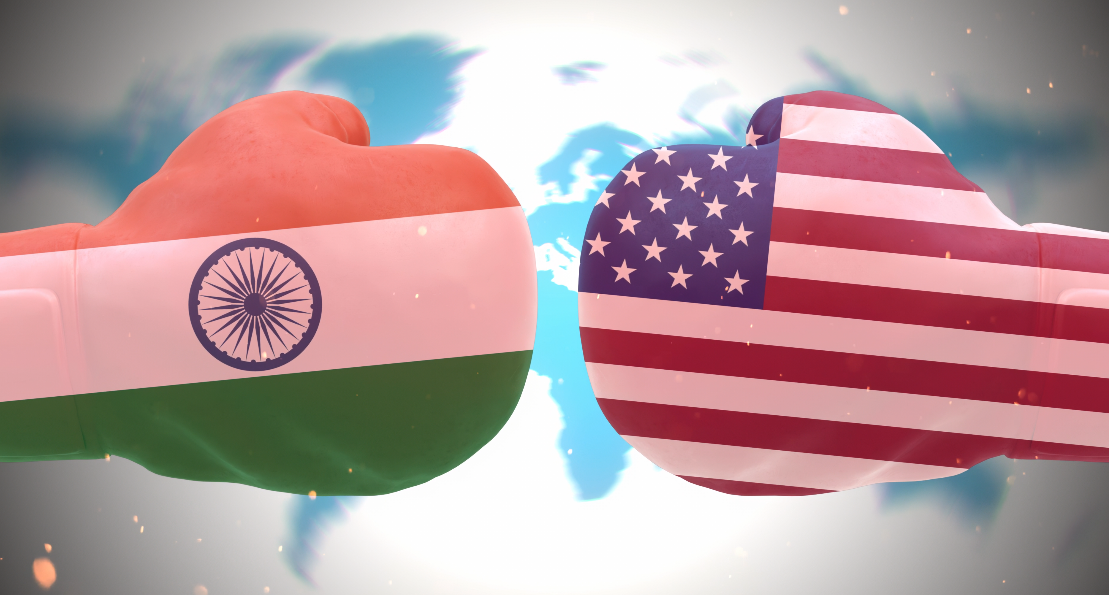In the backdrop of “Howdy Modi” and “Ab ki Baar, Trump Sarkar,” which amplified the bonhomie in the India-America relationship shaped during George W. Bush’s time, US President Donald Trump’s sugar-uncoated remarks on imposing a 25 percent trade tax and penalty on India for dealing with Russia on energy and military equipment have not only taken a geopolitical turn but could also destabilize America’s economy, as inflation and household expenses could spiral up and potentially hit his grandiose dream of MAGA (Making America Great Again). On the other hand, the draconian 25 percent tariff could unsettle India’s economy only for a short time. Notably, India’s economy is likened to an elephant—slow to start but unstoppable once in motion.
The World Bank’s Global Economic Prospects report (January 2025) projects India’s GDP growth at 6.7 percent for FY26 and FY27, outpacing the global average of 2.7 percent. The International Monetary Fund (IMF) echoes this, forecasting 6.5 percent growth for 2025 and 2026. Having surpassed Japan to become the world’s fourth-largest economy in 2025 with a nominal GDP of USD 4.187 trillion, India is on track to overtake Germany by 2028. Here are five reasons why Trump’s tariffs cannot halt India’s economic trajectory.
Why Are India’s Economic Fundamentals So Resilient?
India’s macroeconomic stability acts as a shield against global headwinds and external shocks like tariff hikes. The country’s growth is driven by a young population, with a median age of 28.8 years compared to 38.5 in the US and 42.8 in Europe, as per UN Population Statistics (2024). This demographic dividend, coupled with a robust capital market and structural reforms, supports India’s ambition to add USD 1 trillion to its GDP every 12-18 months, targeting a 9 percent nominal GDP growth rate until 2047. The IMF highlights India’s strong performance as an opportunity to advance reforms, ensuring sustainable growth. With a diversified economic base and rising domestic consumption, India is well-equipped to absorb short-term trade disruptions.
Why Does India’s Diversified Trade Protect It?
India’s export markets are spread across Europe, the Middle East, and ASEAN countries, reducing reliance on the US, which accounts for less than 3 percent of India’s GDP. This diversified trade basket cushions the economy against tariff hikes. Consultancy firm EY India called Trump’s dead-economy remarks “quite misplaced,” noting India’s leadership in the Global South’s economic rise. As developed economies face ageing populations, the Indian talented diaspora’s contributions in technology and services bolster their growth, enhancing India’s global relevance. This broad trade network ensures that tariff-related headwinds remain manageable.
Why Is India’s Manufacturing Boom a Game-Changer?
India is positioning itself as a global manufacturing hub, particularly in electronics and renewable energy. The electronics sector’s value addition has surged from 30 percent to 70 percent, with projections to reach 90 percent by FY27. World Bank Country Director Auguste Tano Kouame notes India’s potential to produce technology at lower costs than China, leveraging its large, skilled workforce. The India Semiconductor Mission aims to make India a powerhouse in electronics manufacturing, while its wind power component industry could meet 10 percent of global demand by 2030. These advancements reduce import dependence and strengthen India’s role in global supply chains.
Why Is India’s Technological Prowess a Key Strength?
India’s leap from agriculture to services, bypassing traditional industrialization, has made it a leader in digital outsourcing and technology. Its educated middle class drives innovation in artificial intelligence, generative AI, and space exploration. The Indian Space Research Organisation’s (ISRO) milestones, including the NASA-ISRO Synthetic Aperture Radar (NISAR) mission launched in July 2025, showcase India’s cost-effective capabilities. With over 400 foreign satellites launched via the Polar Satellite Launch Vehicle (PSLV), India’s space sector attracts global investment. These technological strides create high-value jobs and insulate the economy from trade barriers.
Why Do Tariffs Create Opportunities for India?
Trump’s tariffs may inadvertently benefit India by encouraging US companies to seek alternatives. Many American firms rely on India’s talent and manufacturing capacity, particularly in IT and electronics. The ‘Make in India’ initiative, combined with a thriving digital economy, positions India to climb the global value chain. As businesses navigate tariff walls, India’s competitive workforce and manufacturing policies offer solutions. The IMF emphasizes that India’s structural strengths—demographics, digital innovation, and manufacturing focus—outweigh short-term challenges, enabling the country to capitalize on global shifts.
India’s economic ascent is unstoppable, driven by its diversified markets, manufacturing ambitions, technological leadership, and youthful population. As the world’s third-largest economy by purchasing power parity, India is not easily swayed by tariff threats. Its ability to tackle geopolitical complexities while pursuing its goal of becoming an advanced economy by 2047 underscores its resilience. Trump’s tariffs, while a minor hurdle, cannot derail the momentum of an economy that shines brightly on the global stage, much like a star in India’s remarkable space saga.











